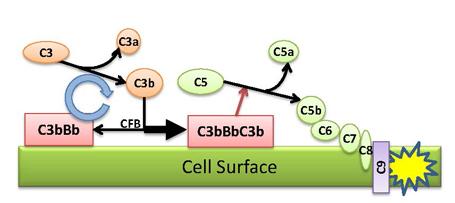
The Clinical Renal Functional Diagnostic Division provides a comprehensive evaluation of the complement system. To provide the best chance of accurately defining a patient’s cause and consequences of complement dysregulation, we require three types of data: acquired drivers of disease, complement biomarkers profiling, and functional analysis of complement pathways.

What Does Functional Testing Show?
- Complement biomarkers are levels of complement proteins and their cleavage (or breakdown) products.
- Specific biomarkers provide a detailed and mechanistic understanding of the underlying complement pathology to add to disease definition. By defining a complement pathway signature, biomarkers can be useful to follow disease activity and/or severity in the clinical setting.
- Complement function = how the complement system works.
- Measuring and following complement activity can predict disease status (active vs. inactive) and response to therapy.
- Antibodies that can cause complement dysregulation such as nephritic factors and factor H autoantibodies.
- Identifying acquired drivers of disease such antibodies to C3 convertase, factor H and factor B provides a metric to follow a patient’s clinical course.
- The underlying basis for C3G is dysregulation of complement (C3 and C5 convertases) in the fluid phase (in the blood stream) and in the glomerulus, specifically in the glycomatrix.
- The occurrence of this process can be seen on the renal biopsy.
- The occurrence of this process can also be diagnosed and followed by taking blood samples and studying complement in those samples.
- Complement testing has to be comprehensive to offer a complete overview of the dysregulation; testing only a few complement proteins is of limited value.
- The interpretation of complement tests is complicated and requires expertise.
Can biomarkers curtail the need for renal biopsy? No, because of chronic changes in a kidney that:
- Represent an important component of kidney biopsy evaluation.
- Are generally irreversible.
- Have a major bearing on kidney function,
- May be as important as the underlying disease etiology in predicting prognosis, guiding treatment and assessing treatment response.